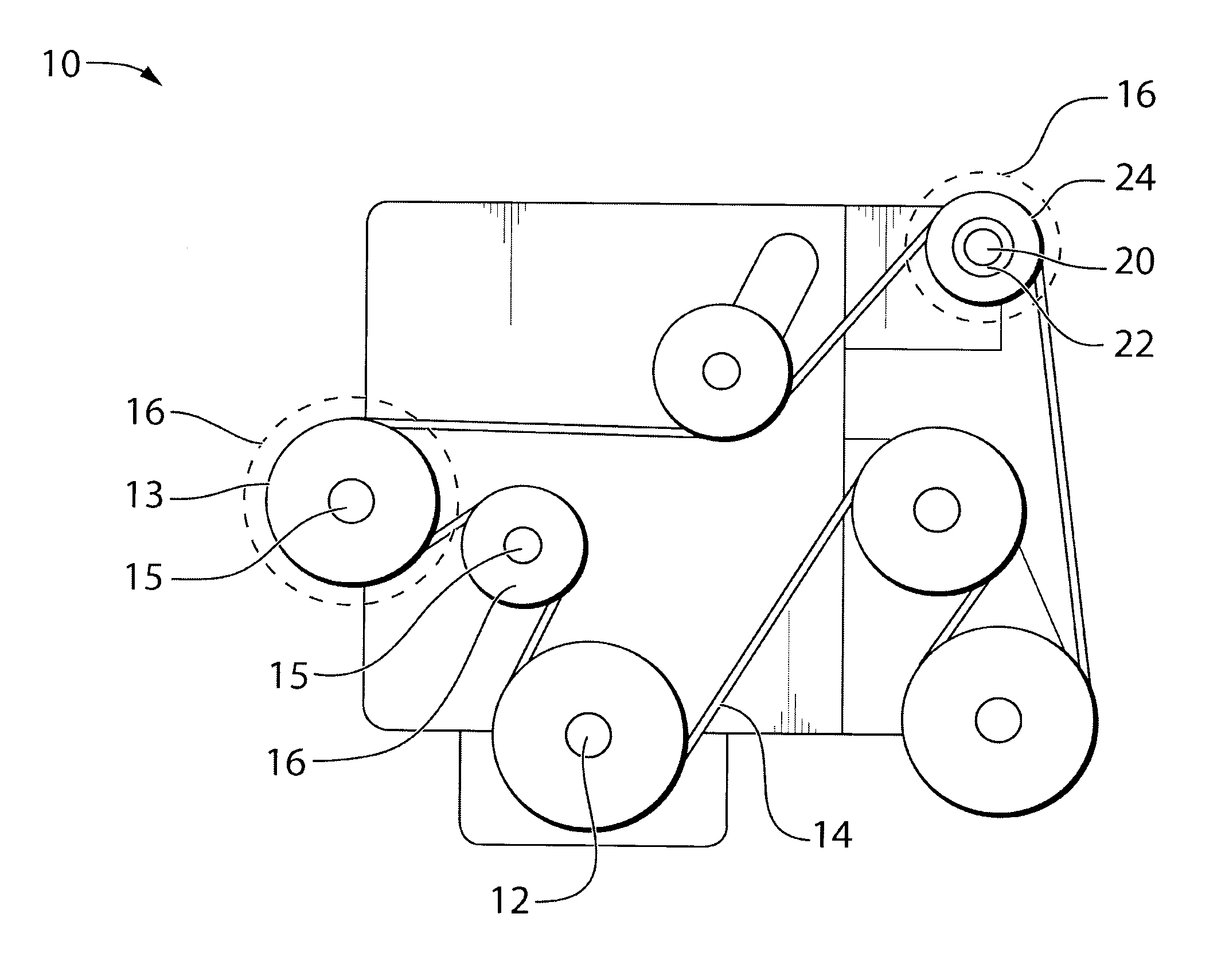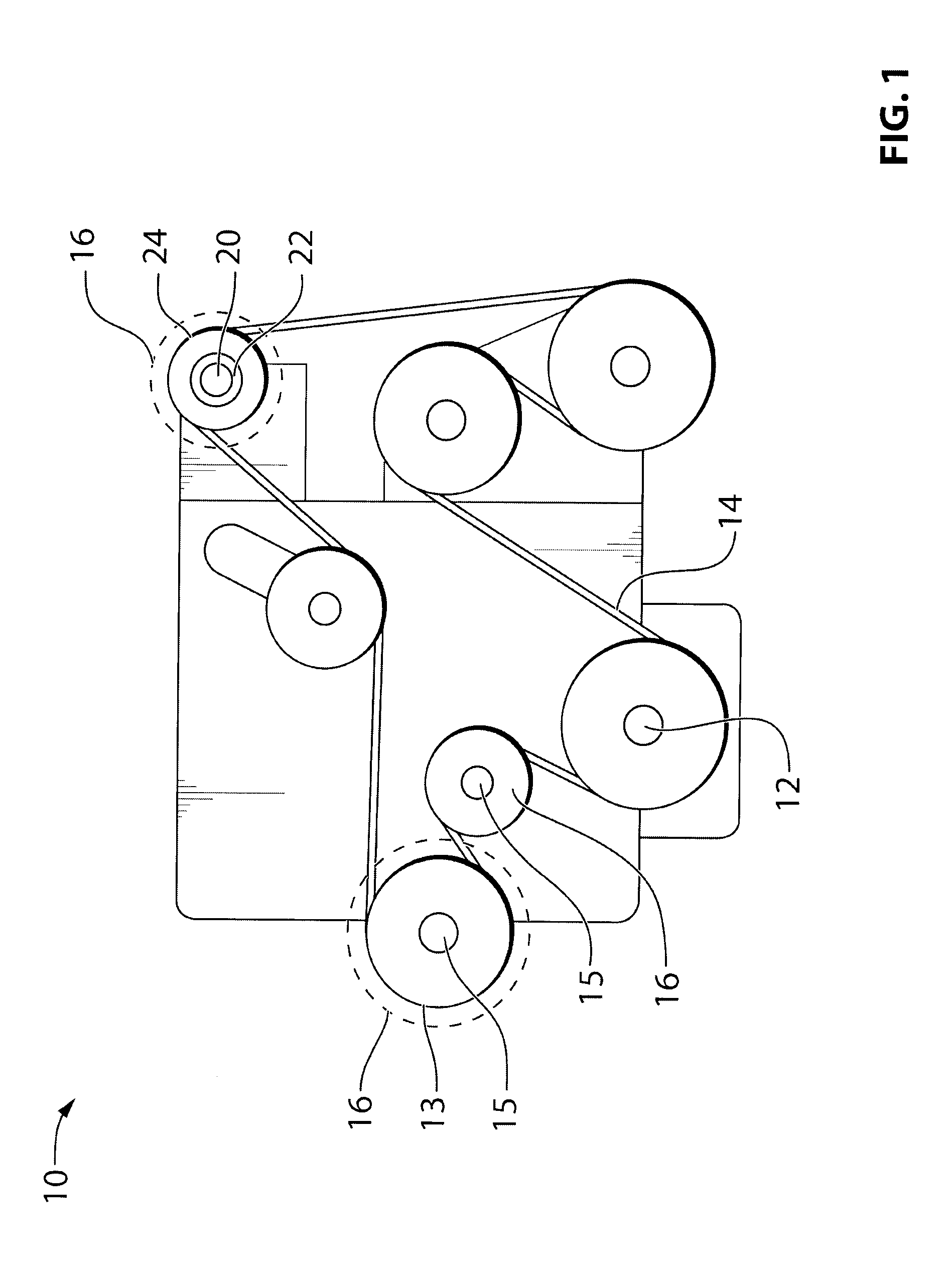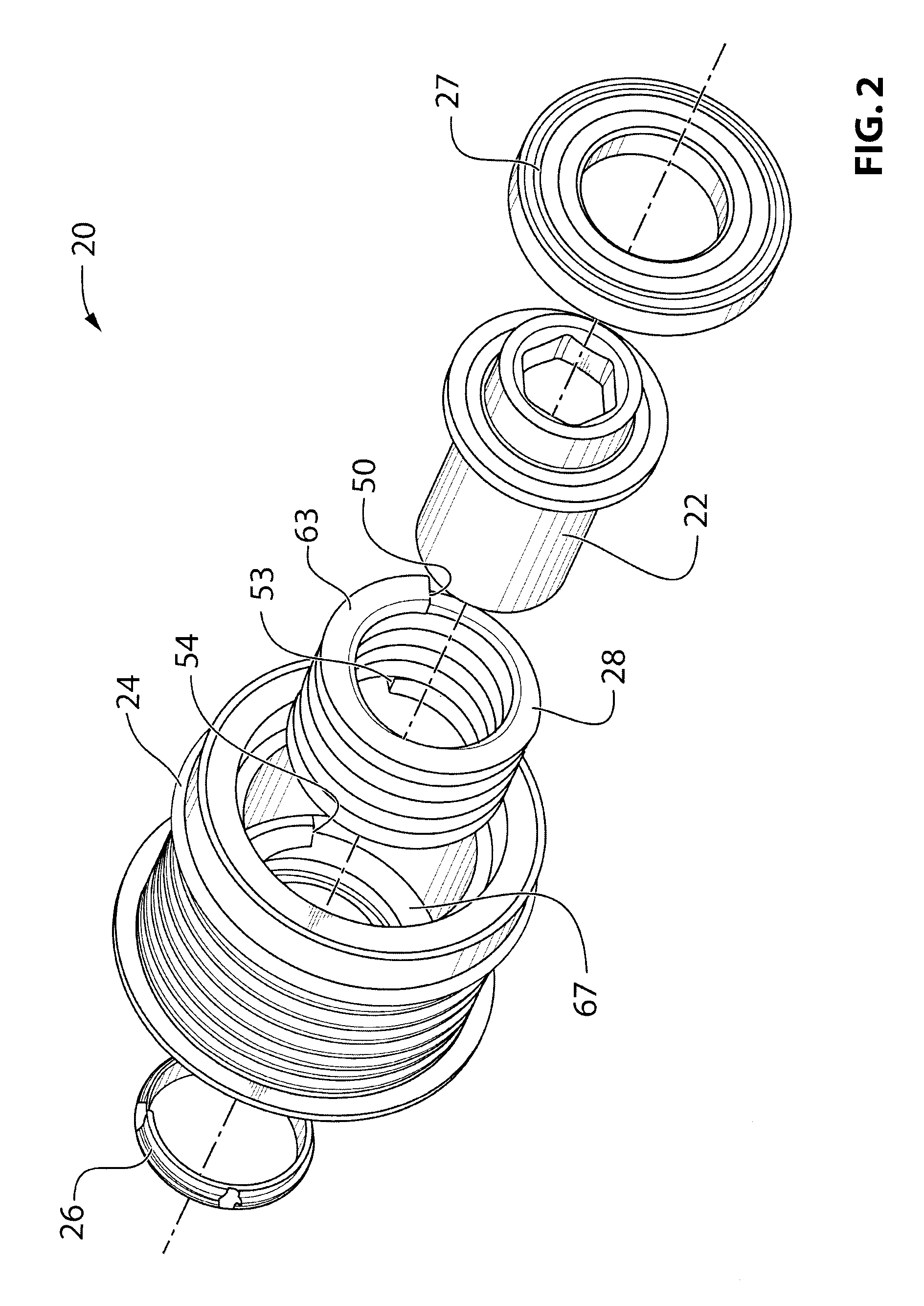Decoupler assembly having limited overrunning capability
a technology of decoupler assembly and overrunning capability, which is applied in the direction of couplings, slip couplings, gearings, etc., can solve the problems of high manufacturing cost, inability to apply coatings to the interior surface of wrap springs, and inability to engage wrap springs. the coating process is made more difficult and expensive than it would otherwis
- Summary
- Abstract
- Description
- Claims
- Application Information
AI Technical Summary
Benefits of technology
Problems solved by technology
Method used
Image
Examples
Embodiment Construction
[0030]Reference is made to FIG. 1, which shows an engine 10 for a vehicle. The engine 10 includes a crankshaft 12 which drives an endless drive element, which may be, for example, a belt 14. Via the belt 14, the engine 10 drives a plurality of accessories 16 (shown in dashed outlines), such as an alternator and a compressor. Each accessory 16 includes an input drive shaft 15 with a pulley 13 thereon, which is driven by the belt 14. A decoupler assembly 20 is provided instead of a pulley, between the belt 14 and the input shaft 15 of any one or more of the belt driven accessories 16. The decoupler assembly 20 transfers torque between the belt 14 and the shaft 15 but automatically decouples the shaft 15 from the belt 14 when the belt 14 decelerates relative to the shaft 15. Additionally, the decoupler assembly 20 allows the speed of the belt 14 to oscillate relative to the shaft 15. Thus, oscillations in the belt speed that are the result of oscillations in the speed of the crankshaft...
PUM
 Login to View More
Login to View More Abstract
Description
Claims
Application Information
 Login to View More
Login to View More - R&D
- Intellectual Property
- Life Sciences
- Materials
- Tech Scout
- Unparalleled Data Quality
- Higher Quality Content
- 60% Fewer Hallucinations
Browse by: Latest US Patents, China's latest patents, Technical Efficacy Thesaurus, Application Domain, Technology Topic, Popular Technical Reports.
© 2025 PatSnap. All rights reserved.Legal|Privacy policy|Modern Slavery Act Transparency Statement|Sitemap|About US| Contact US: help@patsnap.com



